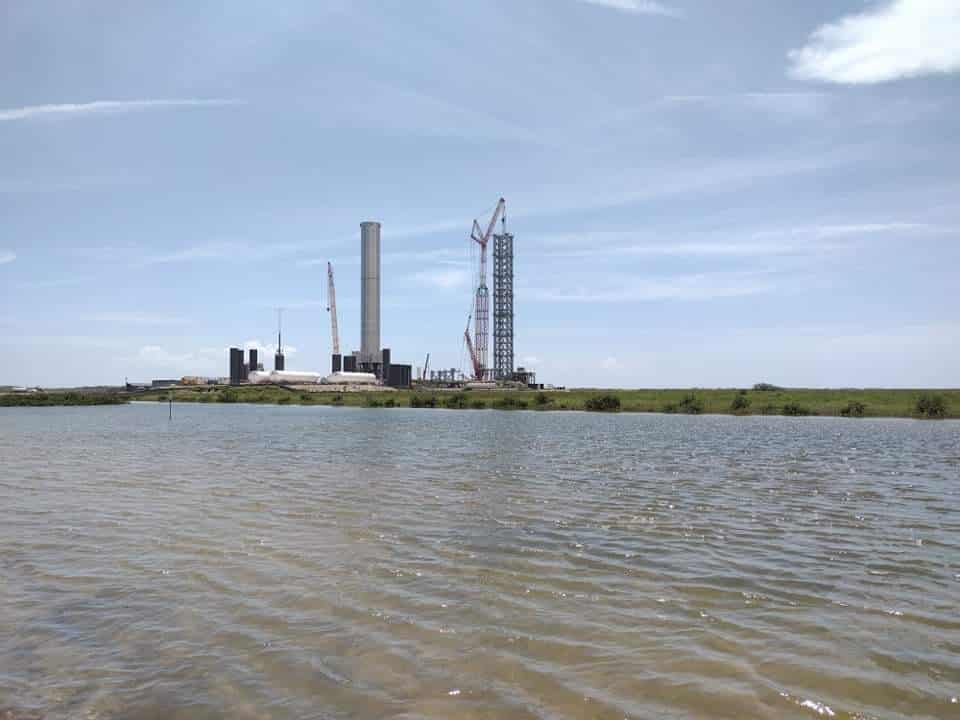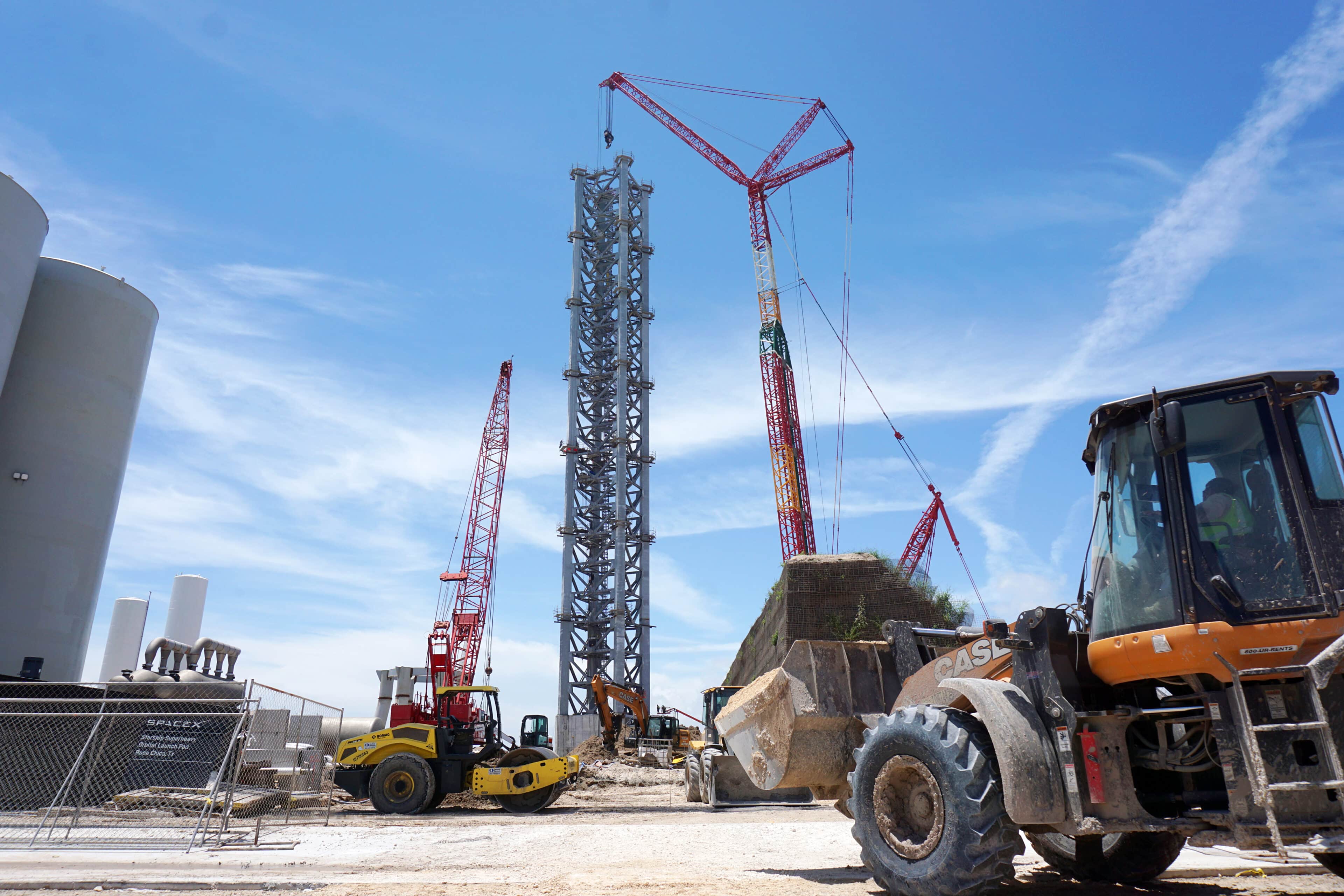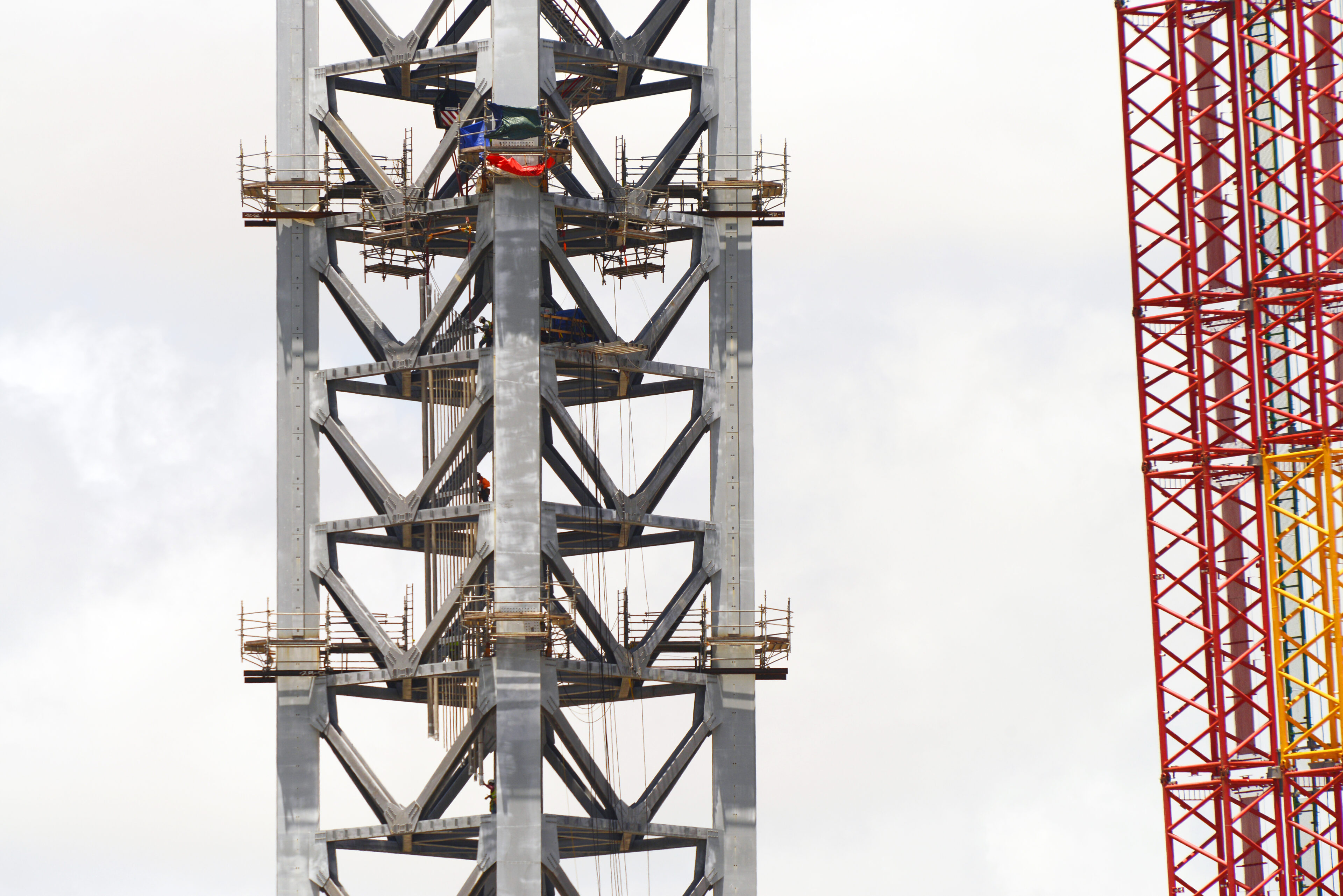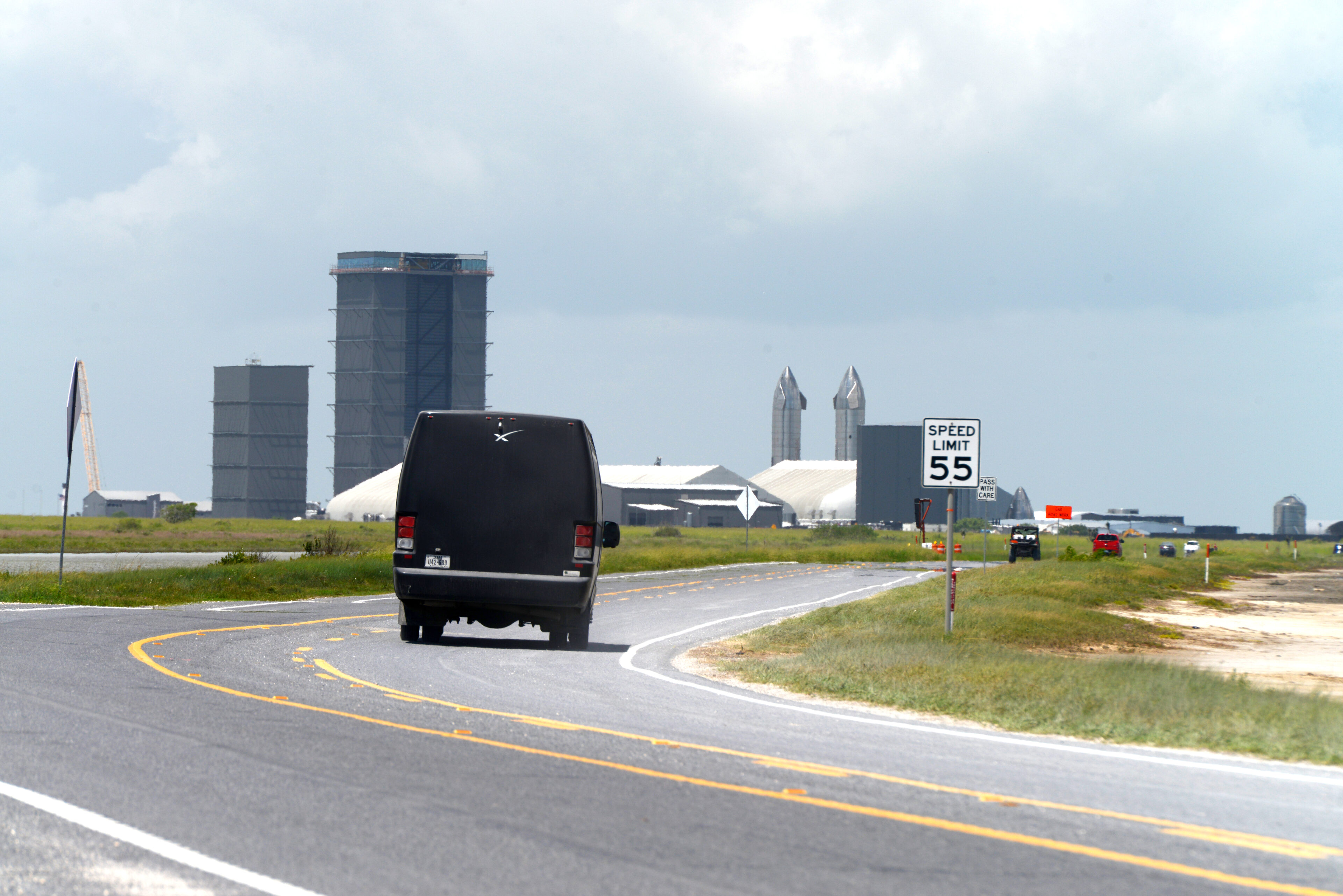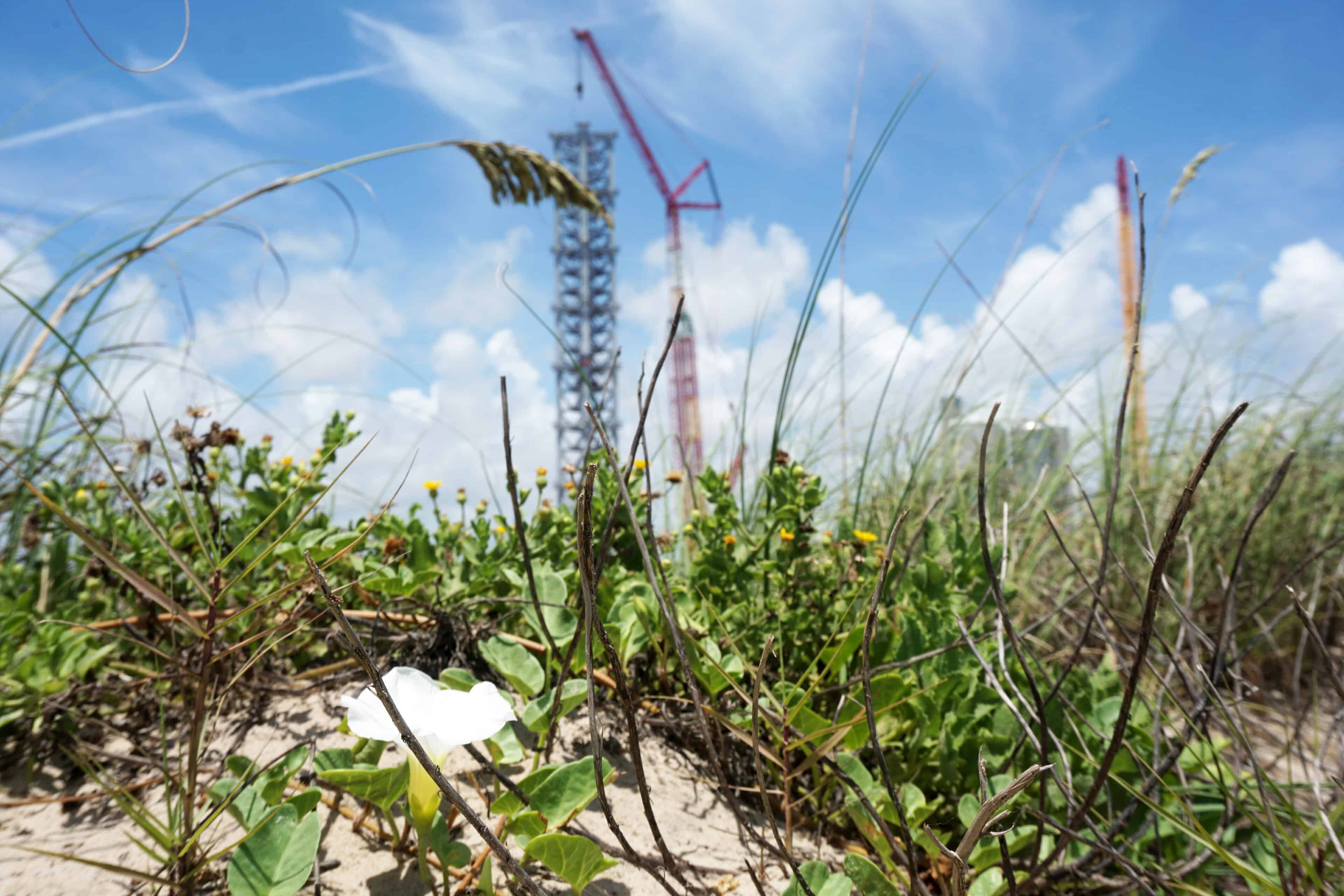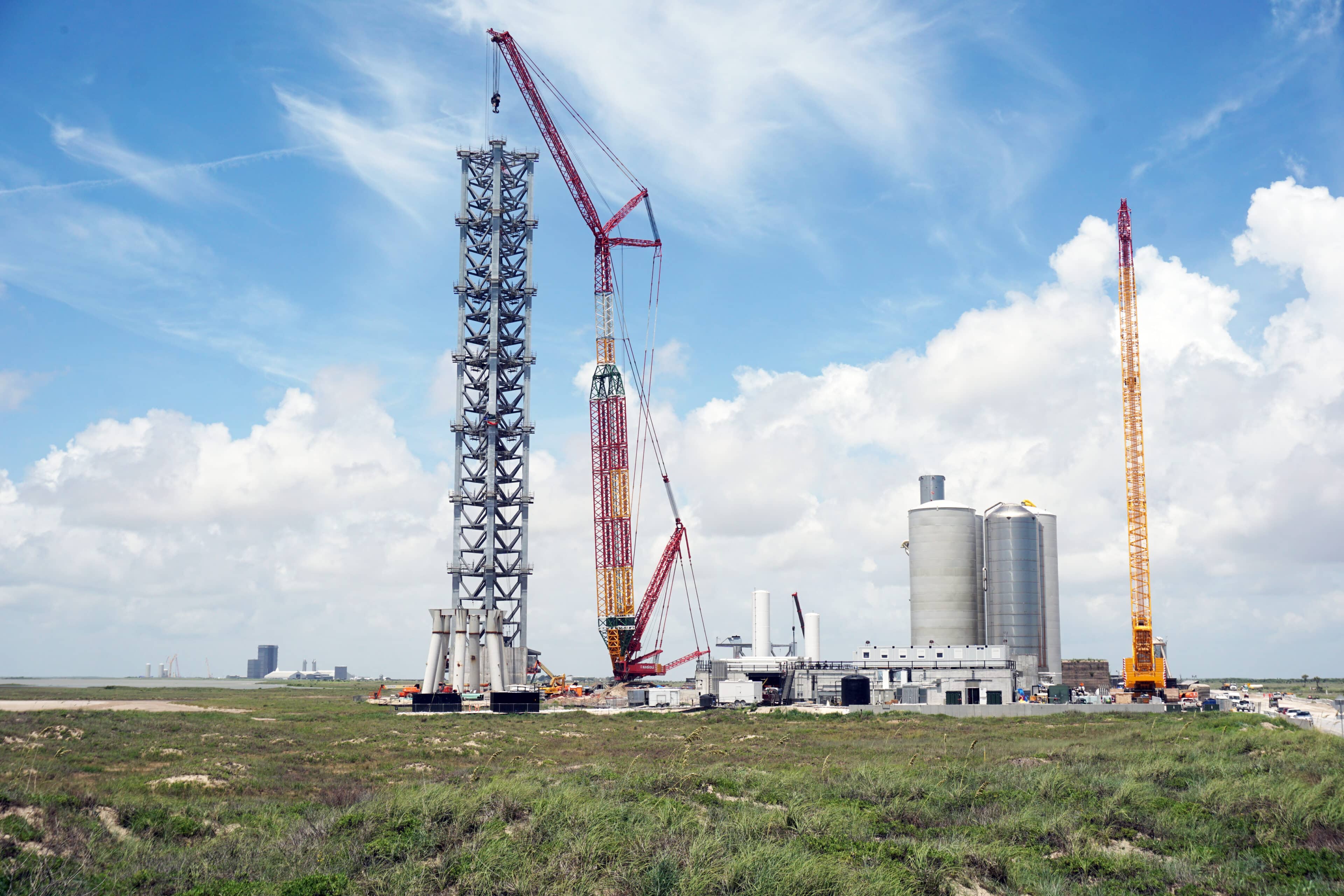A 480-foot-tall Starship launch tower SpaceX is building at Boca Chica Beach might have to go, depending on the results of an ongoing Federal Aviation Administration review of the company’s evolving plans for the site.
In 2014 the FAA conducted an Environmental Impact Statement (EIS) and issued a Record of Decision approving Boca Chica for up to 12 commercial launches a year of SpaceX’s Falcon 9 and Falcon Heavy rockets. However, the company’s plans for the site changed, and in 2019 the Starship development program began at the site, which SpaceX founder and CEO Elon Musk has dubbed “Starbase.”
The most recent phase of the program involves testing of the 230-foot-tall Super Heavy booster stage, the first of which has already been built and moved to the launch pad for initial testing at Boca Chica. The full-size Starship prototypes that have been tested at the site, including the SN15, which flew and landed successfully on May 5, are only 165 feet tall in comparison.
The company needs the FAA’s permission to carry out the next phase of testing, which involves suborbital and orbital launches of the combined Starship/Super Heavy, collectively Starship, which SpaceX is developing to take humans to the moon and Mars.
The FAA decided late last year that a new environmental review was warranted, and now Reuters is reporting that the agency has informed SpaceX that it might not approve the launch tower now being erected. If that’s the case, it would have to be torn down. The FAA is including the launch tower in its latest review despite SpaceX’s contention that it shouldn’t be included since the “integration tower” would only be used for production and research and development, and not for launches requiring FAA permission, according to Reuters.
However, FAA safety authorization division manager Daniel Murray wrote to the company last month that a project description provided to the agency by SpaceX indicated otherwise, and that the height of the tower far exceeds that of the tallest planned infrastructure the FAA reviewed in its 2014 EIS for Boca Chica, the news agency reports.
On July 1 Musk tweeted photos of the BN3 Super Heavy prototype being transported from the Boca Chica production complex to the launch site, and a giant crane installing the seventh segment of the launch tower, which SpaceX said would be used to attach the Starship and Super Heavy.
Gwynne Shotwell, SpaceX’s president and chief operating officer, said in June that the company hoped to make its first orbital flight from Boca Chica, using the integrated Starship and Super Heavy, this month.
According to a document filed with the Federal Communications Commission in May, the Super Heavy would separate from the Starship a little over two minutes after launching from Boca Chica and splash down in the Gulf of Mexico about 20 miles offshore. The Starship would then continue flying between the Straits of Florida and execute a soft landing in the water more than 60 miles off the northwest coast of Kauai, Hawaii, according to the document.
SpaceX is also converting two former offshore oil-drilling platforms, one at the Port of Brownsville and one at Pascagoula, Miss., for Starship launches and landings offshore. Last year the company began advertising for offshore operations engineers to “work as part of a team of engineers and technicians to design and build an operational offshore rocket launch facility.”
SpaceX on Thursday did not respond to a request for comment.

